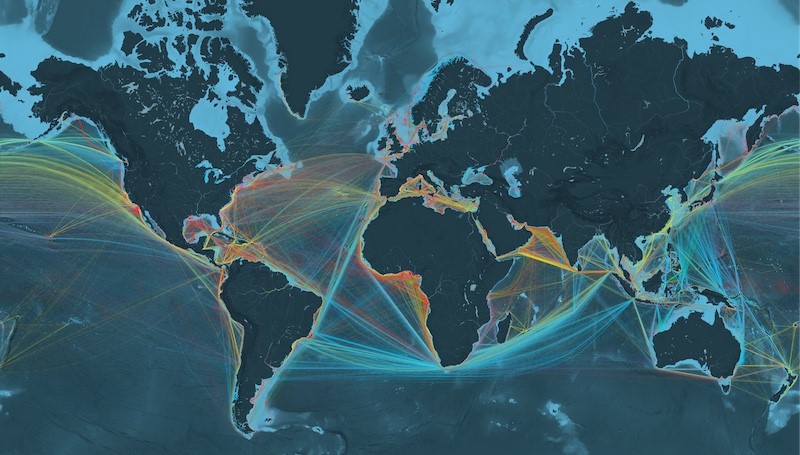Jeff Payne, NESA Center, 1 April 2020
Governments around the world remain fixated on addressing the immediate challenges created by the Covid-19 pandemic. The immediate costs, both social and fiscal, of addressing the viral outbreak will be high virtually everywhere. The secondary costs will also be high and require reflection on standard procedures for a whole variety of political, security, and economic systems. One area that will have to be addressed by all nation states as a result of this pandemic is the efficiency and fortitude of global medical supply chains.
One of the particularly insidious aspects of this viral outbreak is that medical professionals in many countries do not have access to key supplies needed to address the outbreak. Supply scarcities are common and expected during crises, which is why many states maintain caches of key pharmaceuticals, medical tools, and research compounds to bridge the gap created by supply chain disruptions. The Covid-19 challenge has been met by various policy responses around the world. Some have been more successful than others. Some states have responded with greater urgency than others. Yet, virtually every government that faces this challenge has found itself with some medical supply gap that caches are either not built for or are not sufficient to stopgap.
In the United States, medical supply shortfalls have led to discussions about the logic of relying upon global supply chains for maintenance of the public health system. An estimated 72% of United States pharmaceutical consumption is supplied by foreign markets, with a substantive portion of non-domestic supply coming from East and South Asian suppliers. With Covid-19 initially emerging in China and spreading most immediately throughout Northeast and Southeast Asia, there were disruptions to the global supply chain. More pharmaceutical supplies were needed by East Asian countries, disrupting distribution to other markets. More basic medical safety and testing equipment were redirected to locations in Asia. When the virus spread, the supply chain was already interrupted to a degree and states often did not possess adequate stockpiles of necessary equipment. With a crisis as substantial as this one, shortages are much more apparent.

Some states interpret the current viral outbreak as justification for investing in greater domestic production of key medical supplies. This is to be expected and is currently emerging in the United States as a subject of discussion among members of the United States Congress. Yet, upon the conclusion of the Covid-19 crisis, the policy and economic realities of global supply chains will reinforce that no state has the ability to be an island for future public health emergencies. The reasons for this are numerous, but a few to highlight are:
- Past public health emergencies around the world have been best addressed by multilateral partnerships and medical diplomacy. For instance, the H1N1 outbreak in 2009-2010 led to a global effort to track the spread of the virus, treat patients, mitigate the spread, and develop research. This will be the case with Covid-19 but much harder to see when amidst the crisis.
- The medical industry is attuned to the global marketplace and cannot easily or quickly be reshaped to address particular national needs. Simple medical commodities can certainly be subsidized by states to provide increased supply, but the specialized processes that medical production often requires cannot always be localized without prohibitive costs. Costs that few states would be able to cover.
- This viral outbreak has been more severe than past global pandemics and revealed the weaknesses of global stockpiles of emergency supplies. It will prove more cost effective and more socially sound to deepen domestic stockpiles of respirators, medical gowns, intubation tubing/supplies, and other key medical components. This virus clearly shows that we need to rethink and reinforce our global stockpiles.
In the long run, this challenging time will likely reveal key weaknesses that our supply chains will have to overcome. Not only will medical supply chains be adapted, but a great many other commodity and natural resource transport systems will end up being reformed. Covid-19 revealed global over-reliance on Asian economies for the production of medical tools, equipment, and pharmaceuticals. This will require government to develop new procedures with industry to work within a model that assumes similar crises in the future. What solutions are developed will be the result of numerous conversations.
What can be recommended now is to ensure balances are maintained to reach effective policy decisions. First and foremost, the advice of experts within the medical and public health sectors must be incorporated to without hesitation. Their experiences with pandemics, treating large numbers of patients, and familiarity with the stresses put upon the health sector during crises cannot be undervalued. Secondly, nation states will need to recommit to existing cooperative practices. Humanitarian assistance and disaster relief efforts are not only valuable, but they prove time and time again to be mission critical to easing the scale of crises. Third, industry considerations and limitations need to be addressed. Banking and investment sectors matter, but more important will be manufacturers and logistics firms, as they are the critical agents for production and delivery. Finally, public policy must account for states’ infrastructural needs. Investment in developing countries to diversify global supply chains will also address dangers posed by public health crises. In developed states, infrastructure can be addressed through modernization, reformation, and reinvigoration. The Covid-19 pandemic is a global challenge. One part of that challenge that must not be overlooked is the protection and sustainment of global supply chains critical to public health.
The views presented in this article are those of the speaker or author and do not necessarily represent the views of DoD or its components.